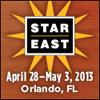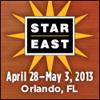 |
Mobile Testing Tools 101
Slideshow
The burgeoning use of mobile devices has created enormous opportunities for organizations to leverage mobile to increase sales, advertise products, and collaborate with internal and external resources. However, with increasing usage, the need to perform testing on these devices is...
|
David Dang, Zenergy Technologies, Inc.
|
 |
Mobile Testing Methodologies: Trends, Successes, and Pitfalls
Slideshow
In today's dynamic mobile marketplace—where new handsets and mobile operating systems are released every day—your ability to deal with these changes which impact your mobile product is vital. The mobile application lifecycle today must be short; must be of great quality; cover...
|
Eran Kinsbruner
|
|
|
The Evolution of the User Experience: An Interview with Genefa Murphy
Podcast
Creating a rich UX for mobile apps has gone from being a nice feature—to an absolute must. Genefa Murphy at HP discusses how agile development that incorporates collaboration between designers, developers, and testers goes a long way in building the apps that truly succeed in today's marketplace.
|
|
|
|
Reports of the Death of Testing Have Been Greatly Exaggerated Some say testing is dead. Others argue that it's indispensable. Lee Copeland says that both sides are valid—if you keep their contexts in mind.
|
|
|
|
Danger! Danger! Your Mobile Applications Are Not Secure
Slideshow
A new breed of mobile devices with sophisticated processors and ample storage has given rise to sophisticated applications that move more and more data and business logic to devices. The result is significant and potentially dangerous security challenges, especially for location-aware mobile applications and those storing sensitive or valuable data on devices. To counter these risks, Johannes Ullrich introduces and demonstrates design strategies you can use to mitigate these risks and make applications safer and less vulnerable. Johannes illustrates design patterns to: co-validate data on both the client and server; authenticate transactions on the server; and store only authenticated and access-controlled data on the client. Learn to apply these solutions without losing access to powerful HTML5 JavaScript APIs such as those required for location-based mobile applications.
|
Johannes Ullrich, SANS Technology Institute
|
|
|
It's a Phone First! How to Test Your Five-star Mobile Apps
Slideshow
Mobile application development shares many similarities-and some stark differences-with traditional web-based development. To build, test, and deploy five-star mobile applications, your organization needs-from inception-a focused test strategy to drive quality. Employing the wrong approaches and tools can leave your business sponsors and clients wondering what went wrong. Will Hurley outlines the current mobile landscape and explains what can and cannot be controlled in the mobile lifecycle. He explores the current landscape and limitations on tools for testing mobile apps, and offers guidance on what-and what not to-automate. With Will's guidance, you’ll learn how to establish a mobile lifecycle test strategy that is both leading edge and practical.
|
Will Hurley, Will Hurley - Quality and Security Services
|
|
|
Testing Mobile Apps: Three Dilemmas Solved The fragmentation and unpredictability of the mobile market present new challenges and risks for the business-and the development team. Testers must assure application quality across multiple platforms and help deliver new products almost every day. Using his experiences implementing automated mobile testing for clients, Yoram Mizrachi analyzes three fundamental mobile testing dilemmas encountered when enterprises go mobile. First, learn how and when to use emulators and real mobile devices, when to rely on each, and how many devices you will need in each stage of development. Second, understand the differences between testing on local devices versus remote devices in the cloud and how the differences affect test coverage, scalability, logistics, risk, and security liability.
|
Yoram Mizrachi, Perfecto Mobile
|
|
|
Automating Mobile Application Testing with Monkey Talk As enterprises scramble for competitive advantage by rapidly creating and deploying compelling mobile applications, testing professionals have been challenged to quickly adopt new tools and processes to provide effective testing. Failing to meet this challenge often can result in "one-star" user ratings that doom the application to failure. While many automation engineers have mastered the available tools for automating web application testing, mobile applications require new kinds of tools that understand the richer palette of user interface components and gestures that comprise modern mobile application interfaces. Stu Stern introduces MonkeyTalk (formerly FoneMonkey and FlexMonkey), a free and open source tool that lets testers record, play back, edit, and manage comprehensive functional test automation suites for native Android, iOS, HTML5 and Adobe Flex applications.
|
Stu Stern, Gorilla Logic
|
|
|
Innovative Tools for Your Mobile Testing Toolkit Automating mobile testing faces challenges from a huge variety of devices, resolutions, user interactions, and operating systems. While there is no single solution in the market that can solve all your testing needs, Eing Ong has found a few innovative open source tools that stand out. Learn how Sikuli, ImageMagick, and MOET (Mobile End-to-end Testing) can address the limitations of instrumentation techniques and how you can leverage them individually or together to test your native mobile applications. Eing begins by demonstrating Sikuli's innovative visual technology for iPhone user behavior testing and MonkeyRunner for Android testing. Then she shows how you can use ImageMagick to crop and convert images as well as fine tune image comparisons for image verification.
|
Eing Ong, Intuit, Inc.
|
|
|
Code Coverage in the Internet Age With the proliferation of mobile devices, cloud computing, and client-side scripting-coupled with web services-how do you guarantee adequate code coverage for your applications? Basic tests inadequately cover many of these technologies, leading to defects and disappointing user experiences. Michael Portwood describes the importance of unit test coverage and then presents techniques, tips, and tricks to simplify the process of achieving more complete coverage for Internet-enabled solutions. Michael shares tips for automation and techniques for testing both client- and server-side scripting. Gain insight into identifying code requiring complex testing techniques and explore ideas for covering them. Michael describes complex testing situations-like those found in multi-threaded and distributed code-where test coverage alone may provide misleading results.
|
Michael Portwood, The Nielsen Company
|

